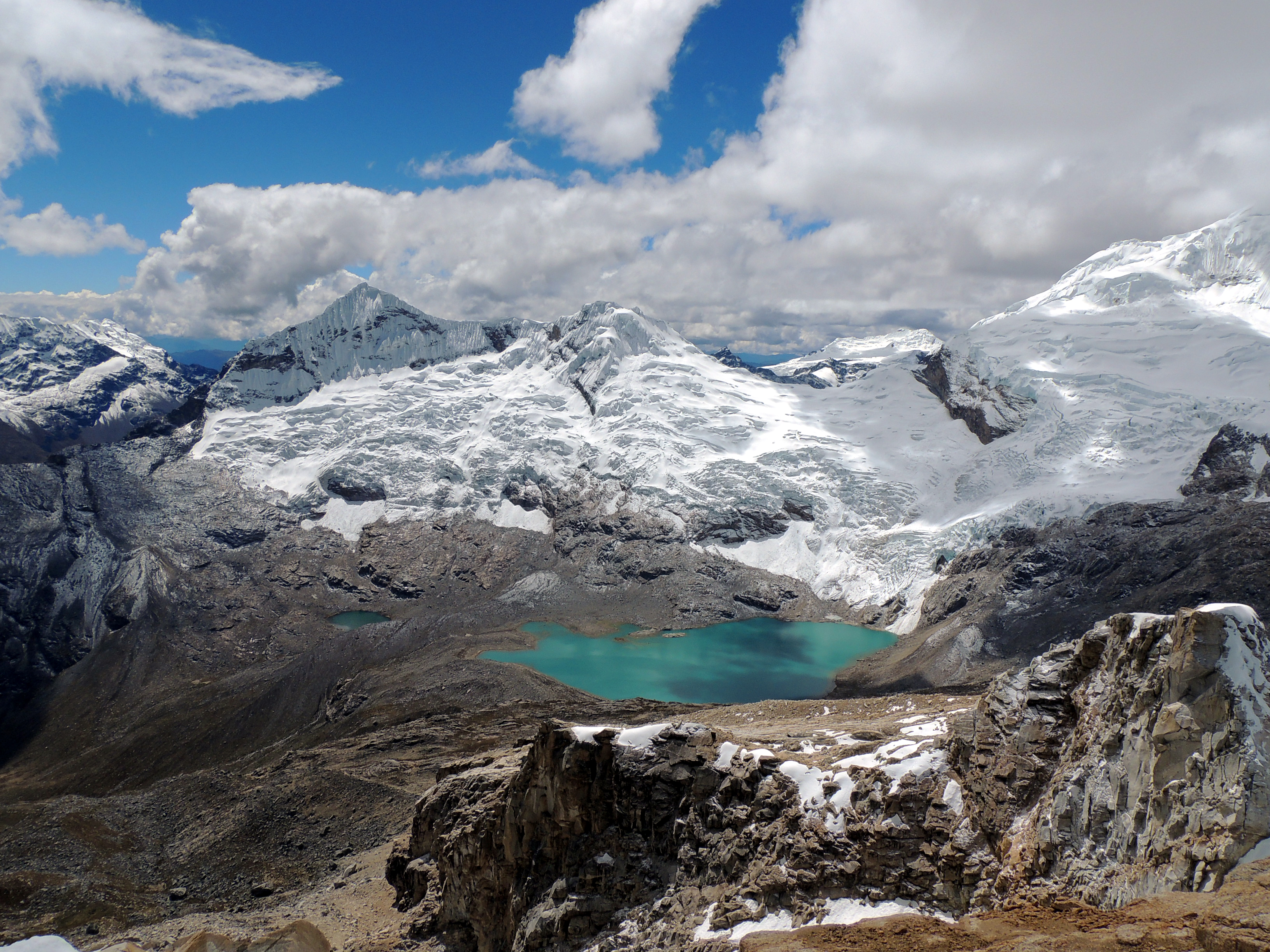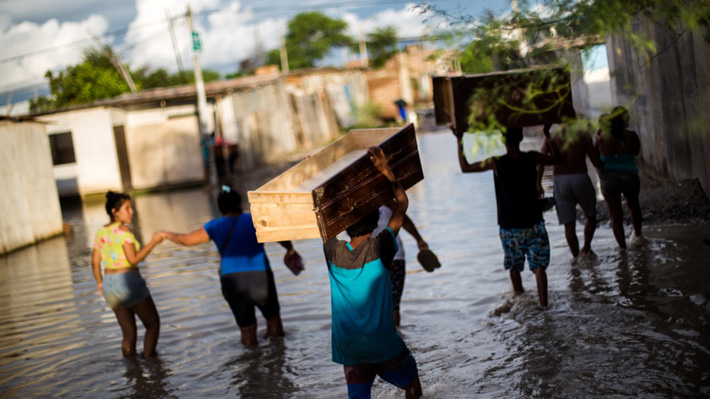Glaciers in Huascarán National Park, Peru
Copyright© Chiugachi, via flickr, CC BY-NC 2.0
Environmental situation Progress on environmental protection, risks caused by climate change
Droughts, flooding, landslips and mudslides are a recurring threat for people living in coastal regions and in the Andes, and are leading to increased crop risks.
In many parts of the country, glacier run-off is used to irrigate fields and to supply drinking water. If the glaciers continue to shrink and the water supply gap increases, this will lead to extremely dangerous water shortages. Water supply for the coastal cities will be particularly affected by these shortages, as the coast of Peru is a desert region whose water supply depends almost entirely on tributaries from the Andes.
Residents attempt to salvage their belongings after flooding in the Peruvian city of Piura in March 2017
The Peruvian government has been stepping up efforts to align economic development with the country’s social and ecological needs. Biodiversity conservation and climate protection are firmly enshrined in the government’s long- and short-term planning. For instance, Peru has committed to various goals, some of them very ambitious, at the national and the international level, for example through its Nationally Determined Contributions (NDCs) and by endorsing the Aichi Biodiversity Targets under the Convention on Biological Diversity. As part of its efforts to become an OECD member, Peru is also very active in boosting its environmental sector. Because of the huge impacts climate change is having on Peru, the Peruvian government proclaimed a national state of emergency at the beginning of 2022.
The forestry law, which came into force in 2015, and the strategy for forests and climate change focus on protecting forest ecosystems. The national and regional authorities responsible for enforcing the rules and regulations are implementing measures to control illegal logging, in particular. However, Peru is still a very long way away from having a comprehensive national forest strategy. In addition, there are still major gaps with regard to establishing statutory environmental standards. There is no viable concept for formalising the forestry sector and for effectively fighting deforestation.
As at: 03/06/2022

